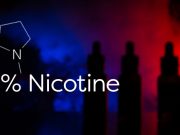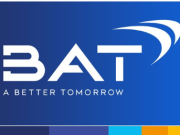Additionally, the FDA has imposed stringent marketing and advertising guidelines to prevent the targeting of young people. These of course aim to reduce the use of enticing flavours and appealing packaging that could attract adolescents. It also forces vape retailers to adhere to strict labeling and packaging standards, which among other things aim to highlight the potential health risks associated with vaping.
By enforcing these regulations, the FDA is meant to be striking a balance between reducing youth vaping rates and ensuring product safety, whilst providing adult smokers with safer alternatives to help them quit smoking. However, a recent review conducted by the US Health and Human Services’ Office of the Inspector General (OIG), found that the FDA is failing to oversee certain groups of retailers.
The FDA seems to have focused on retailers in poor neighbourhoods
The OIG report highlighted that in some states, the agency seems to have focused on vape retailers in disadvantaged neighborhoods. Meanwhile, it seems like online outlets, which are very popular with teens, are not being scrutinized enough. Moreover, violators of age restrictions are not being penalized appropriately.
The OIG revealed that between 2010 and 2020, the FDA conducted over a million inspections aimed at identifying underage sales, and managed to reach approximately 74% of the 360,000 retailers of tobacco products across the US at least once. It added that in cases where initial inspections detected violations, inspectors consistently revisited these locations within a year.
However, highlighted the report, despite these efforts youth vaping remains a pressing issue. According to a 2022 report from the US Centers for Disease Control and Prevention (CDC), over 3 million students in high and middle schools across the US reported using a tobacco product in the previous month.
The WHO recommends full vape and tobacco bans across campuses
Echoing a similar sentiment, last week the World Health Organization (WHO) issued recommendations to completely ban smoking and vaping on school campuses worldwide. It emphasized on a “whole-of-school” approach which should include teachers, staff, students and parents, in the enforcement of these bans.
The WHO’s recommendations to educators and policymakers are as follows:
- Fully banning nicotine and tobacco products within campuses.
- Enforcing restrictions on the sale of such products in close proximity to educational institutions.
- Forbidding both direct and indirect advertising and promotion of the products in the vicinity of classrooms.
- Declining any form of sponsorship or involvement with the tobacco and nicotine industries, such as sponsorships for school initiatives or projects.
Prohibition is a recipe for disaster
Meanwhile, numerous studies have consistently shown that a prohibitionist approach to substance use among teenagers, such as the one recommended by the WHO, is often ineffective and can even have unintended consequences. Prohibition tends to create an environment of secrecy and rebellion, making the banned substances more attractive to adolescents. Research has indicated that when teenagers perceive a substance as forbidden, they may be more inclined to experiment with it, and will go to all lengths to obtain it, which results in a booming black market of the banned product.
Furthermore, strict punitive measures can result in a fear of seeking help or support when needed, as teens are afraid of the consequences of admitting substance use. Therefore, instead of relying solely on punitive measures, evidence suggests that a more effective approach to addressing teen substance use involves education, open communication, and harm reduction strategies.
Comprehensive substance abuse prevention programs, combined with support for mental health and emotional well-being, have shown promise in reducing risky behaviors. This latter factor is one which is crucial to consider, given the recent data indicating that many teens who vape regularly do so to deal with stress and a lack of mental well-being.












